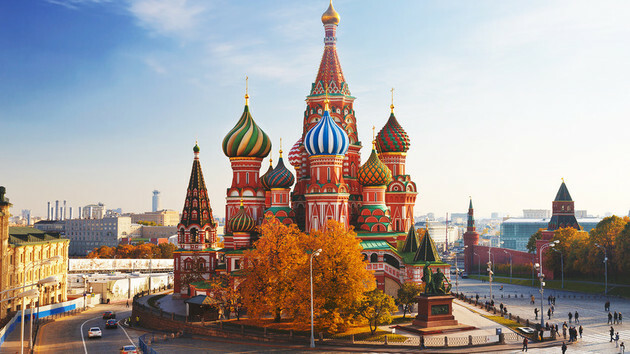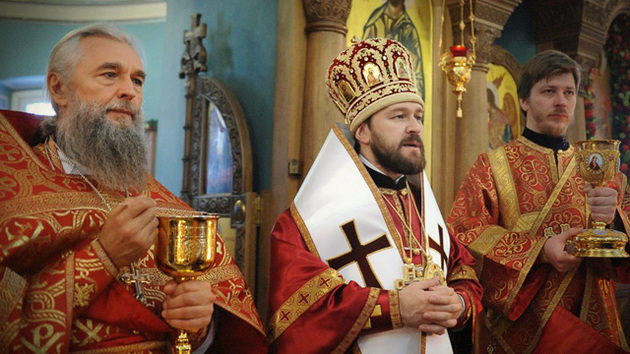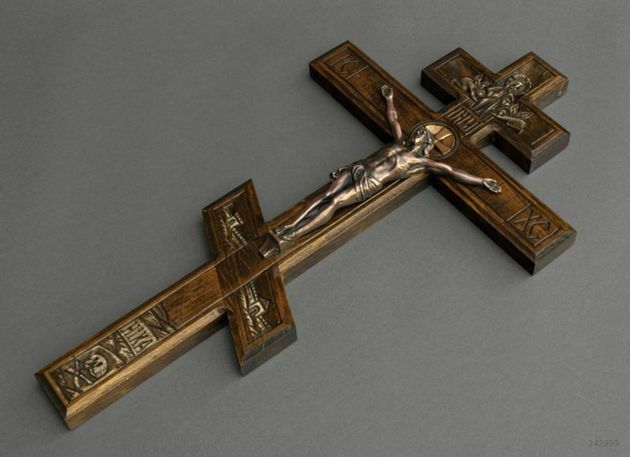THE Catholic Orthodox Apostolic Church it was the result of a dismemberment of the Roman Catholic Church that emerged after the Eastern Schism in 1054.
It is the second largest Christian community, bringing together about 250 million faithful worldwide, especially in the East.
Origin of the Orthodox Church

The Orthodox Church arose out of theological and political differences between East and West Christians that culminated in the 1054 Schism.
East and West disputed theological issues such as the supremacy of the Bishop of Rome over the clergy, the issue of veneration of images and the origin of the Holy Spirit.
Without reaching an agreement, Pope Leo IX (1002-1054) and Patriarch Michael I Cerularius (1000-1059) excommunicated each other.
From then on, Christianity began to form into two large groups: the Roman Catholic Church, with its headquarters in Rome, and the Orthodox Church, with its headquarters in Constantinople (present-day Istanbul).
The pardon of both parties would only happen on July 25, 1967 with the visit of Patriarch Athenagoras I (1886-1972) to Pope Paul VI (1897-1978) to the Vatican.
The Orthodox Church developed in the Byzantine Empire and spread across Eastern European countries and Russia.
Currently, Orthodox Christians number about 250 million faithful in countries such as Bulgaria, Belarus, Greece, Cyprus, Moldova, Republic of Macedonia, Montenegro, Poland, Russia, Romania, Serbia, Ukraine and States United.
Definition of Orthodox
The word orthodox comes from the Greek, from the junction of "orthos" which means "straight" and "doxa" which means "faith". Therefore, Orthodox Christianity believes that they are the only depositaries of the true faith.
Differences between the Roman Catholic and Orthodox Churches

There are several differences between the two institutions in the field of doctrine, liturgy, ecclesiastical hierarchy, etc.
| Features | Roman | Orthodox |
|---|---|---|
| Doctrine | Salvation comes from faith and works. | Salvation comes from faith. |
| afterlife | There is purgatory for those souls who are not yet pure enough to enter Paradise. It is also believed that indulgences can shorten punishments in Purgatory. | Purgatory is not believed to exist. |
| Hierarchy | The Pope is the visible head of the Church and is infallible in matters of doctrine and morals. | Each bishop has autonomy over his church and there is no greater or infallible leader. The decision is taken collectively. |
| Priesthood | Accessible to celibate men. | Accessible to married or celibate men. |
| Liturgy | The rites changed over time, especially after the Second Vatican Council (1962-1965). | The ceremonies, except for minor local differences, are the same since the foundation. |
| Fast | It is recommended not to eat meat during Lent and on all Fridays of the year. | At three times of the year, the faithful must fast or abstain from certain foods. |
| Kids | From baptism and throughout life, children receive the sacraments of the Church. | From baptism onwards, they receive all the sacraments. |
| Images | Three-dimensional images such as statues and two-dimensional images such as paintings are venerated. | After the outbreak of the iconoclastic movement, only icon worship is allowed. |
Similarities between the Roman Catholic Church and the Orthodox
There are more similarities than differences between the two churches that have been one for over a millennium.
The main similarity is in the belief in one God who sent his Son, Jesus Christ, for the salvation of mankind. This same God still manifests in the Holy Spirit.
Both churches pray the same prayer in masses, the "Creed", where the principles of the faith are summarized.
Likewise, Mary is venerated as the Mother of God, and the saints and martyrs also receive homage from the faithful, in addition to being examples of life.

The Bible is the source of faith, as well as the Oral Tradition and the comments made by the holy doctors of the Church.
Sunday and holy days prescribed by the Church are observed, as well as festivals such as Christmas and Easter are celebrated.
Likewise, they have the sacraments such as baptism, confession and communion which are considered the channels through which the believer can be healed and receive God's grace.
Orthodox Cross

Orthodox Christianity worships a cross with a different design from the one we usually see in Latin churches.
The Orthodox cross has eight arms and Jesus appears with both feet pierced by nails. At the top end, we have the place where the name of Jesus was written in several languages. At the bottom, we can see a skull that reminds us of "Calvary", the mount where Christ was crucified.
A bent arm is also noteworthy. The left side, to the top, would be where the "Good Thief" was, the one who was being crucified with Jesus and who asked for forgiveness. The right side, down, indicates the other convict who has not repented.
Orthodox Church in Brazil
In Brazil, Orthodox Catholicism arrived with Polish, Greek, Arab, Russian, Ukrainian immigrants.
Thus, in the states of São Paulo, Rio de Janeiro and Paraná, where there is a greater number of descendants of these nationalities, it is possible to find several temples and Orthodox communities.
One of the oldest Orthodox communities in Brazil is Florianópolis, founded in 1924. The largest Orthodox temple in Brazil is the Metropolitan Orthodox Cathedral, located in São Paulo, whose construction was completed in 1954.
Curiosities
- Almost two-thirds of the Orthodox in the world, around 200 million, are linked to the Patriarchate of Moscow.
- After decades of persecution in the U.R.S.S, the Russian Orthodox Church is experiencing spectacular growth. In 1988 it had 76 dioceses, 6,900 parishes and 22 monasteries. In 2016, in turn, it counts 293 dioceses, 35,000 parishes and 900 monasteries.
- the Russian president, Vladimir Putin, is a practicing Orthodox Catholic and does not hide this condition from his citizens.
Read other texts on the subject:
- Religious intolerance
- Lutheranism
- Anglicanism
- arab culture
